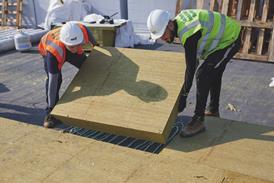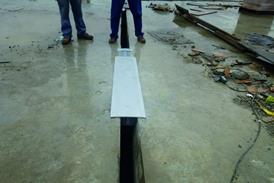- News
Regulations latest
All the latest updates on building safety reform
- Focus
- Comment
- Data
- Programmes
- CPD
- Events
- Jobs
- Subscribe
- Building Boardroom
Why build with concrete when you can build with stone?
By Thomas Lane2023-04-03T07:01:00

Source: Agnese Sanvito
Stone is typically stronger than concrete with one third of the carbon impact. Engineer Webb Yates is reinventing an ancient material for the modern age
Creating a concrete structure involves extracting limestone from a quarry, heating it to 1450°C in a kiln and then grinding the residue to a powder to make cement. This cement is mixed with aggregates and water and poured into shuttering, which workers have spent hours painstakingly putting together along with rebar to give the structure its tensile strength. Once set, the shuttering is removed and, 28 days later, the concrete will have reached its full strength.
Why not cut out all this faff simply by using quarried limestone blocks to create the structure? After all, that is what people did for thousands of years before cement was invented. And stone is typically two and half times stronger, with a carbon footprint one third that of concrete.
This content is available to REGISTERED users
You are not currently logged in.
LOGIN or REGISTER to access this story

LOGIN or REGISTER for free access on selected stories and sign up for email alerts.
Take out a print and online or online only subscription and you will get immediate access to:
- Breaking industry news as it happens
- Expert analysis and comment from industry leaders
- Unlimited access to all stories, including premium content
- Full access to all our online archive
Get access to premium content subscribe today



















